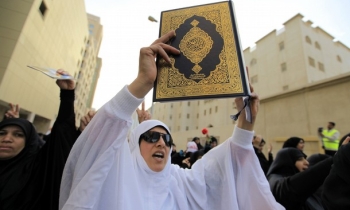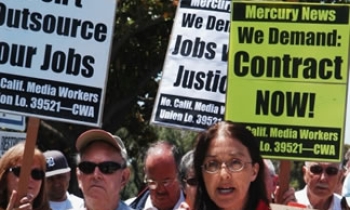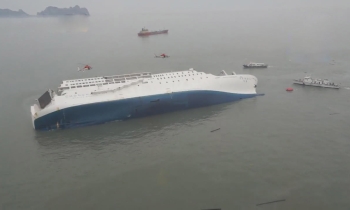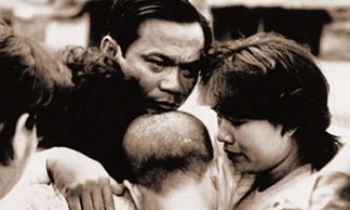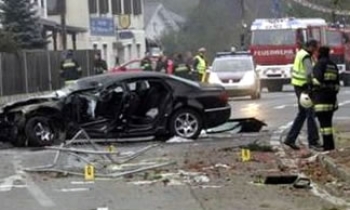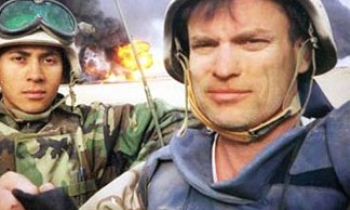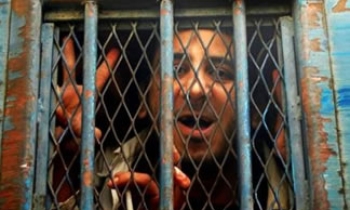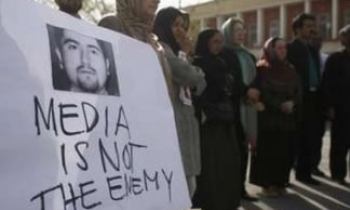The Iranian government has shut down four publications, including a major reformist newspaper, according to reports. The reformist daily, Shargh, or East, was shut down Monday indefinitely because it had refused to replace its managing director apart from publishing a cartoon in a recent edition that was considered insulting to the government, state television said, citing a statement from the press monitoring agency.

The closures were ordered by the Commission for Authorising and Monitoring the Press, a wing of the country's Ministry of Culture and Islamic Guidance.
"Shargh was banned and referred to the court because of its frequent violations and refusing to make amends in the past month, especially an insulting cartoon in a recent edition,” the statement said. The press agency, it said, had issued 70 warnings to the popular newspaper, which has a circulation of 100,000, and had ordered it to replace its managing director, which it had not done.
The cartoon published Thursday last showed two chess pieces, a white knight facing an angry black donkey, a symbol of ignorance in Iran, on a checkered board. Journalists working at the newspaper said the cartoonist had tried to make the black donkey clearer on the checkered board by making the area around it whiter.
The cartoon was believed to be a reference to Iran’s negotiations over its nuclear programme. It was seen as an allusion to a comment by President Mahmud Ahmadinejad in which he said he had felt himself surrounded by a halo when he addressed the UN general assembly last year. The authorities therefore saw the cartoon as an unacceptable portrayal of Iran’s debate with the western countries about its nuclear programme. The president’s office strongly denied he had said such a thing.
Reuters reported that managing director, Mohammad Rahmanian, asked on Sunday for a two-month extension to find a successor and accordingly was not in violation of the deadline. He intends to appeal the order. Authorities shuttered the daily saying it had not replaced Rahmanian as ordered in a letter on August 10.

Mashallah Shamsolvaezin, spokesman for the Iranian Committee for the Defence of Freedom of the Press, however said that the ban appeared permanent. Sharq had come under pressure from the judiciary because of its editorial line, according to Shamsolvaezin. Its closure was a clear message intended to silence critics and other reformist papers, he told the Committee to Protect Journalists (CPJ).
Political monthly Nameh, or Letter, was also shut down Monday, the news agency Islamic Students News Agency (ISNA) reported, but no reason was cited. The journal was published by religious nationalistic opposition groups. The press agency also revoked permits for two other journals, Hafez and Khatereh. Hafez was a literary and historical monthly that had published articles about a former monarch of Iran.
The Associated Press described the exercise as a a fresh show of determination by Iran's ruling clerical establishment to silence dissent ahead of elections scheduled for December 15.
"This wave of censorship is totally unacceptable," Reporters sans Frontières (RSF) said. "Political repression is now compounding the judicial harassment that Iran’s journalists have been undergoing in recent weeks.” Committee to Protect Journalists (CPJ) Executive Director Joel Simon said, “There can be no press freedom in a country in which government agencies hire and fire editors."

"It seems that the government is limiting the freedom at home as the international pressure is increasing on Iran over its nuclear programme," Mohsen Kadivar, a dissident cleric and an Islamic philosopher in Tehran, told the New York Times. “Now that the threat of sanctions looms, the government does not want to hear any protest at home."
"Shargh had become a political club for all the people who had become disillusioned by (last year's presidential) elections. The ban is a price it is paying for criticising the administration, however mildly, and this is a high alert situation," Akbar Montajabi, a journalist who wrote for Shargh and several other previously banned newspapers said in his blog, after the ban was announced, an Inter Press Service (IPS) report said.
Shargh has been harassed ever since it was launched four years ago. It has been threatened by courts twice and was temporarily closed down in 2003, according to RSF. A monthly magazine sympathetic to the liberal opposition, Nameh was one of the few remaining Iranian publications to maintain their independence. Its open, critical style and the fact that it ran articles by journalists and intellectuals who were banned elsewhere had always disturbed the government. Its managing editor, Kivan Samimi Behbani, had been interrogated by authorities in September 2004 and March 2005.
More than 100 newspapers and journals were shut down in previous years by the conservative judiciary. But the press has come under even stronger pressure since Ahmadinejad’s election a year ago, the New York Times said.

"Since the handover of the government to the hardliners last year, all newspapers have fallen to increasing self-censorship for the fear of another huge crackdown. Newspapers, under pressure from various bodies such as the judiciary, the ministry of culture and Islamic guidance, intelligence ministry and the Supreme National Security Council, have become too conservative in what they write. But the danger of being closed down looms above their heads everyday," a reformist journalist in Tehran told IPS.
The authorities, however, lifted a ban on the state paper, Iran, which will publish under a new team of managers and journalists and with a new design. The paper had been banned on May 23 after publishing a cartoon that sparked riots by Azeris in the north-western city of Tabriz.
Last month, a government spokesman, Gholamhossein Elham, was reported to have sent a letter to the public prosecutor calling on him to act against newspapers that publish accusations against the government.

